Easy! Delicious! Fun! Try homemade udon!

Have you ever eaten Japanese udon? Surprisingly, it can be made with just flour, salt, and water! This article provides detailed information on materials, how to make them, and tips. Please take a look at this and try making your own udon noodles at home!
-
Table of Contents
- Introduction
- Materials/tools
- How to make
- in conclusion
Introduction
Saitama Prefecture is famous for its wheat production.
In Saitama Prefecture, wheat was once widely grown in the fall and winter after rice was harvested.
For this reason, wheat became the mainstay of the diet, and various ways of eating it developed.
Among them, udon is so popular that it is called the ``Udon Prefecture'' second only to Kagawa Prefecture.
At ``Kumapia'' in Kumagaya City in the northern part of the prefecture, we made udon noodles under the guidance of a professional handmade udon maker.
Materials/tools
[Materials] All-purpose flour (500g), salt (summer: 30g, winter: 16g), water (summer: 220g, winter: 244g), flour (200g)
★Trivia!
1.What type of flour is used for udon noodles?
→It is “All-purpose flour”.
2. What is “All-purpose flour”?
→It's right between "Strong flour" and "Cake flour".
3.Why do you use “All-purpose flour”?
→ ``Strong flour'' makes the noodles very chewy, giving them a hard gummy-like texture.
``Cake flour'' makes the noodles very soft and not chewy, but it is recommended because it is easy for small children and the elderly to eat.
``All-purpose flour'' is often used because it is in the middle of this range and provides just the right amount of body and texture.
4.Why are the amounts of salt and water different when making in summer and in winter?
→In summer, the temperature is high and the dough becomes soft, so adding less water and more salt will make the dough firmer!
In winter, the temperature is low and the dough becomes hard, so add more water and less salt than in summer.
[Tools] Bowl, plastic bag, stretching stick, knife or noodle machine
How to make
① Put the flour in a bowl.
② Pour the salted water mixture into the bowl little by little and knead. Once you knead it, it will become very hard.
★Points
The more you knead it, the firmer it becomes. Furthermore, by letting the dough rest here, it becomes even more chewy!
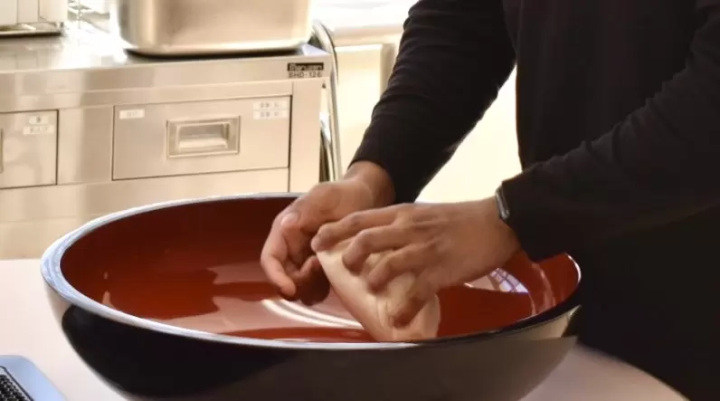
③Place the fabric in a plastic bag and step on it. As shown in the photo below, flatten it a little, fold it into a quarter, and step on it again. Repeat this several times.
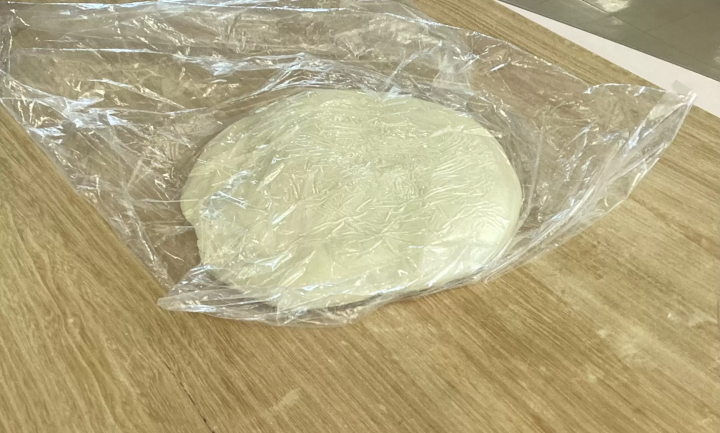
④Use a stretching rod to stretch the dough to a thickness of 5mm. Spread it out occasionally and sprinkle with flour. It takes a lot of strength.

⑤ Fold the stretched dough into thirds.
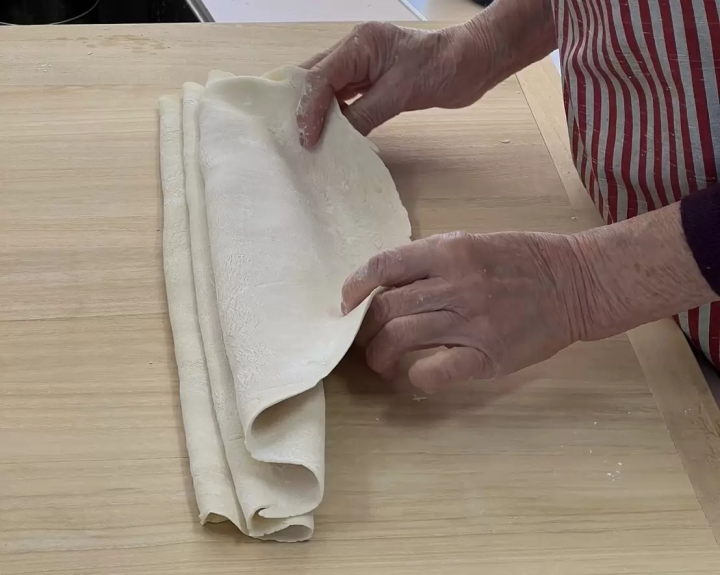
⑥Cut to your desired width. Also, use a noodle machine to cut the dough. When using a noodle making machine, cut the noodles to fit the width of the noodle making machine.
*Note: Once boiled, it will become about one size thicker than the original thickness! When I cut it, it became very thick...
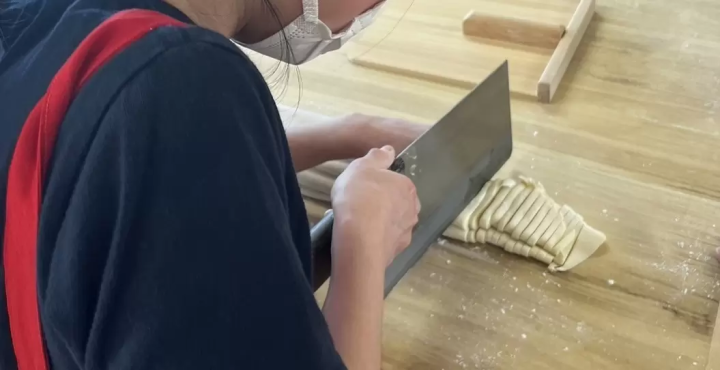
⑦ Boil the noodles. Change the boiling time depending on the width of the cut.
*Note: If the bread is thick, boil it for a longer time.
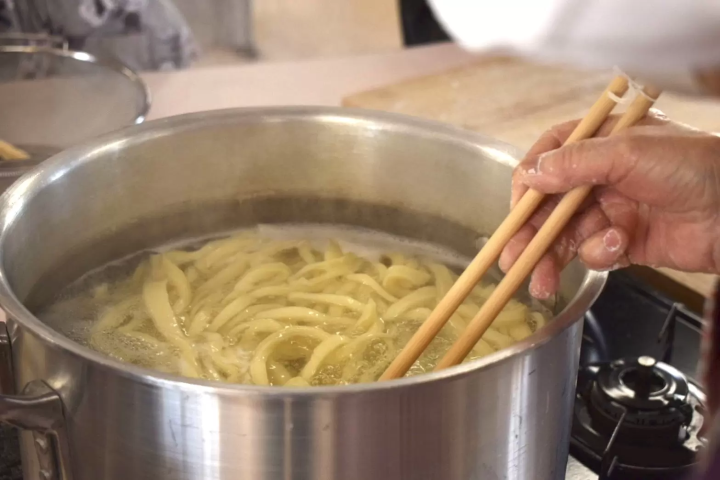
⑧Once boiled, rinse in cold water.
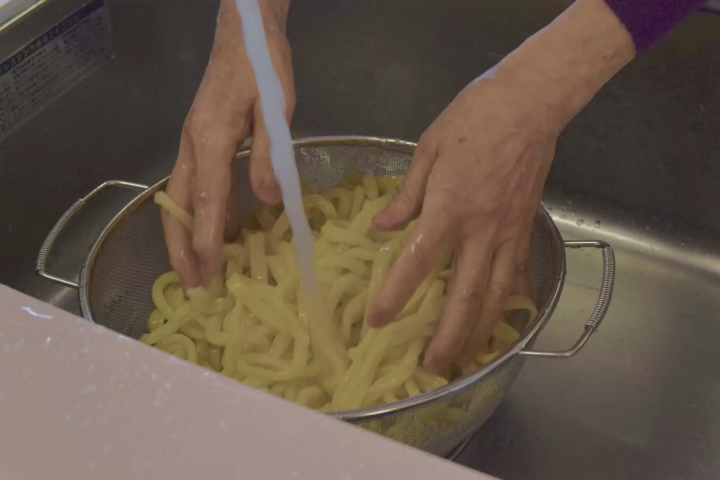
⑨ Arrange and complete!
Hand-made udon ↓ Various thicknesses available.
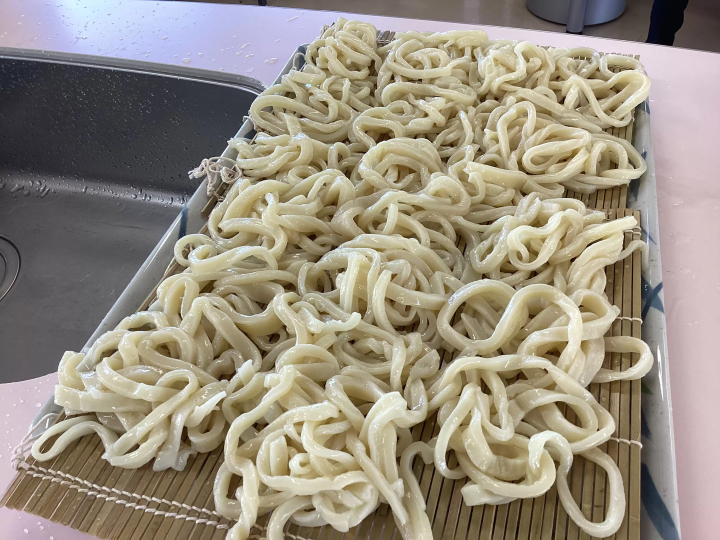
Udon made using a noodle machine↓ Thin and easy to eat.
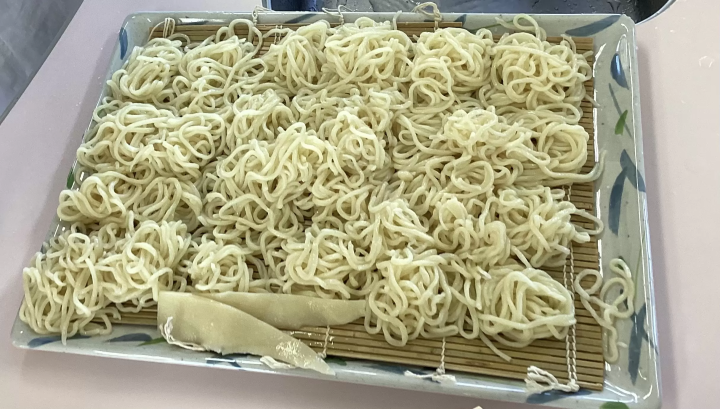
*Please add toppings such as seaweed, sesame seeds, bonito flakes, etc. if you like. My recommendations are squid tempura (snack) and green onions.
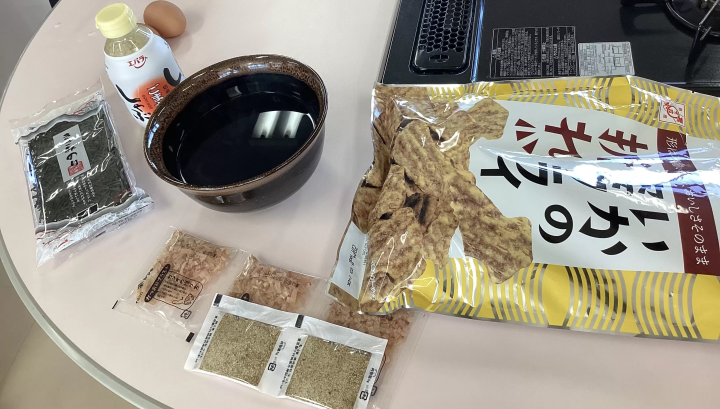
in conclusion
Thank you for watching until the end! After reading this article, you might be able to make udon at home!
The NPO AEA conducts volunteer activities in which children and their families work together to guide guests from overseas. During local traditional events and events, children can actually converse in the English they have learned and interact with people from different cultures, improving their communication skills and developing rich personalities. I would like to play a role in English education that fosters the ability to think for oneself, solve problems, and communicate to others.
The contents on this page may partially contain automatic translation.































![[Northern Okinawa] 4 Recommended Cosmos Fields in Okinawa | Sunflowers and Cherry Blossoms in the Same Season!](https://resources.matcha-jp.com/resize/720x2000/2024/08/12-192028.webp)



![[Corporate Visit List] Near Kansai Airport! Discover Japan’s Technology and Business Philosophy through Industrial Tourism](https://resources.matcha-jp.com/resize/720x2000/2024/12/13-215168.webp)